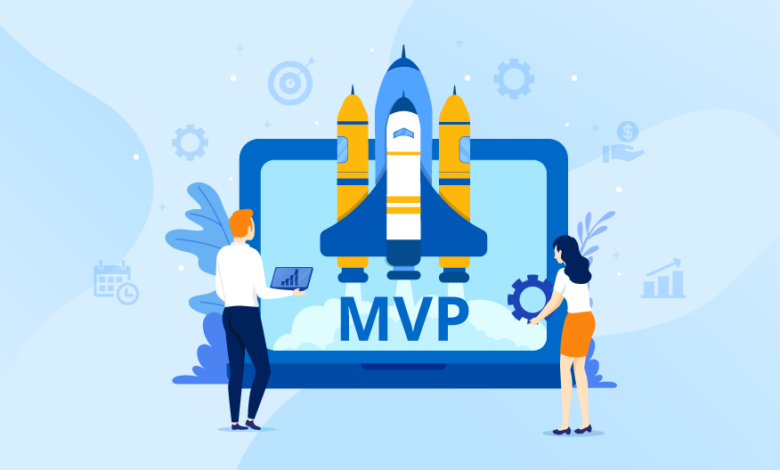What is an MVP and How an MVP Development Company Can Help You Launch Faster

Launching a new product can feel overwhelming, especially when you have a great idea but limited resources, time, or market insight. Many startups and businesses face a common dilemma: how can you test your idea without spending months or even years building a complete product? The answer lies in developing a Minimum Viable Product (MVP). An MVP is a powerful strategy that helps entrepreneurs validate their ideas, save money, and launch faster. In this blog, we’ll explore what an MVP is, why it’s essential, and how working with an MVP development company can streamline your journey from concept to market-ready product.
What is an MVP?
An MVP (Minimum Viable Product) is a simplified version of your product that includes only its core features, the ones necessary to solve the primary problem for your target audience. It’s not about building a “half-finished” product but rather about creating something functional enough to gather feedback and validate assumptions.
Think of an MVP as the foundation of a house. You don’t start with fancy furniture or detailed interiors; you begin with a solid structure that can support future growth.
Key Characteristics of an MVP:
- Core functionality only: Focuses on solving one main problem rather than offering every feature at once.
- Quick to develop: Built to get to market fast and start collecting feedback.
- Cost-effective: Helps save time and resources by avoiding unnecessary development.
- Test-driven: Designed to validate whether your idea resonates with the target audience.
Example:
When Dropbox launched, its MVP wasn’t the full-fledged cloud storage platform we know today. Instead, the founders created a simple video demonstrating how the service would work. This low-cost approach helped them gauge interest before investing in full development.
Why Building an MVP Matters for Startups and Businesses?
Whether you’re a startup founder or an established business exploring new opportunities, building an MVP offers several benefits. It’s not just about speed; it’s about building smart and reducing risk.
1. Validate Ideas Before Full Investment
Imagine spending months developing a product only to discover that there’s no market demand for it. An MVP helps you test your concept early, ensuring you don’t waste time or money on something customers don’t want.
Real-life example:
Instagram’s initial version focused solely on photo sharing. Over time, it evolved into a comprehensive social platform with stories, reels, and direct messaging, but it all started with a simple MVP.
2. Save Time and Money
Building a complete product with every desired feature can be expensive. By focusing only on core functionalities, you minimize development costs while still delivering value to your users.
For instance, an oil and gas marketer looking to create a digital tool for tracking energy consumption could launch with just the basic tracking and reporting features first. This approach allows them to gauge user adoption before adding advanced analytics or integration with other systems.
3. Gain Early User Feedback
An MVP allows you to collect real-world data and feedback from actual users. This information is invaluable for improving your product and aligning it with customer needs.
Consider it as a live experiment: users interact with the product, and their behavior provides insights into what’s working and what needs adjustment.
4. Reduce Risk
Launching a product involves risk, market uncertainty, technical challenges, and financial pressures. By taking a phased approach with an MVP, you reduce the chances of a costly failure. You can pivot or refine your idea based on what you learn during the early stages.
5 Steps to Building a Successful MVP
Creating a successful MVP involves a strategic process. Here’s how you can approach it step-by-step:
1. Identify the Core Problem
Start by understanding the primary issue you want to solve. Talk to potential users, conduct surveys, and analyze market trends. The clearer your problem statement, the easier it will be to design an effective solution.
2. Define the Key Features
Once you’ve identified the problem, list out all possible features, then narrow them down to the essentials. Ask yourself:
- Which features directly solve the core problem?
- Which ones can wait until later versions?
Tip:
Prioritize simplicity. Your MVP doesn’t need to impress with bells and whistles; it just needs to work effectively.
3. Create a Prototype
A prototype or wireframe helps visualize your product before development begins. This step allows for early feedback from stakeholders and prevents costly redesigns later.
4. Build and Launch Quickly
Work with a skilled development team to build the MVP. The focus should be on speed without compromising basic functionality or user experience.
This is where an MVP development company plays a critical role. With their expertise, they can guide you through the process, avoid common pitfalls, and ensure your product is built efficiently and effectively.
5. Measure and Iterate
Once the MVP is in the hands of users, collect data and feedback. Use this information to make improvements, add new features, or even pivot the idea entirely if needed.
How an MVP Development Company Can Help You Launch Faster?
Building an MVP on your own can be challenging, especially if you lack technical expertise or a dedicated development team. This is where partnering with an MVP development company becomes invaluable.
Here’s how they can accelerate your journey:
1. Expertise and Experience
MVP development companies have worked on multiple projects across industries. They understand the common challenges and know what strategies work best for fast, efficient development.
Example:
If you’re a founder with a strong business idea but limited technical knowledge, a development company can fill that gap and ensure your product is built on a solid foundation.
2. Faster Time-to-Market
With a dedicated team of designers, developers, and strategists, these companies can help you bring your product to market much faster than building an in-house team from scratch. Speed is crucial when you want to stay ahead of competitors.
3. Access to Advanced Tools and Technology
MVP development companies have access to cutting-edge tools, frameworks, and best practices. This not only improves the quality of your product but also helps avoid technical debt that could slow you down later.
4. Cost-Effective Solution
Hiring a full-time team can be expensive, especially for startups. By outsourcing to an MVP development company, you gain access to a skilled team at a fraction of the cost.
5. Objective Feedback
Because they aren’t emotionally attached to your idea, a development company can provide honest, data-driven insights. This helps you make smarter decisions about your product’s direction.
4 Common Mistakes to Avoid When Building an MVP
Even with the right strategy, mistakes can derail your MVP journey. Here are some pitfalls to watch out for:
- Adding too many features: Focus on the essentials; overloading your MVP defeats its purpose.
- Ignoring user feedback: Your product should evolve based on real-world usage, not just assumptions.
- Skipping market research: Even the best MVP can fail if there’s no market demand.
- Rushing without planning: Speed matters, but so does strategy. Balance both for the best results.
Real-World Example: Airbnb’s MVP Journey
Airbnb’s founders initially struggled to fund their idea. Instead of building a complete platform, they started with a simple website where they rented out their own apartment to test the concept. This small-scale MVP validated their idea, eventually leading to the global platform we know today.
This example highlights the power of starting small, learning from early users, and scaling based on proven demand.
Conclusion
Building and launching a new product doesn’t have to be overwhelming or risky. A Minimum Viable Product (MVP) allows you to test your idea, gather feedback, and improve your offering without heavy upfront investment. By focusing on core functionality, you can validate your concept and adapt based on real-world insights.
Partnering with an MVP development company can make this process even smoother. With their expertise, tools, and experience, you can bring your idea to life faster while avoiding common pitfalls. Whether you’re a startup founder, an established business, or even an oil and gas marketer exploring new digital solutions, adopting an MVP approach can set you on the path to success.
Start small, stay focused, and keep learning, your MVP could be the first step toward building a product that truly resonates with your audience.





